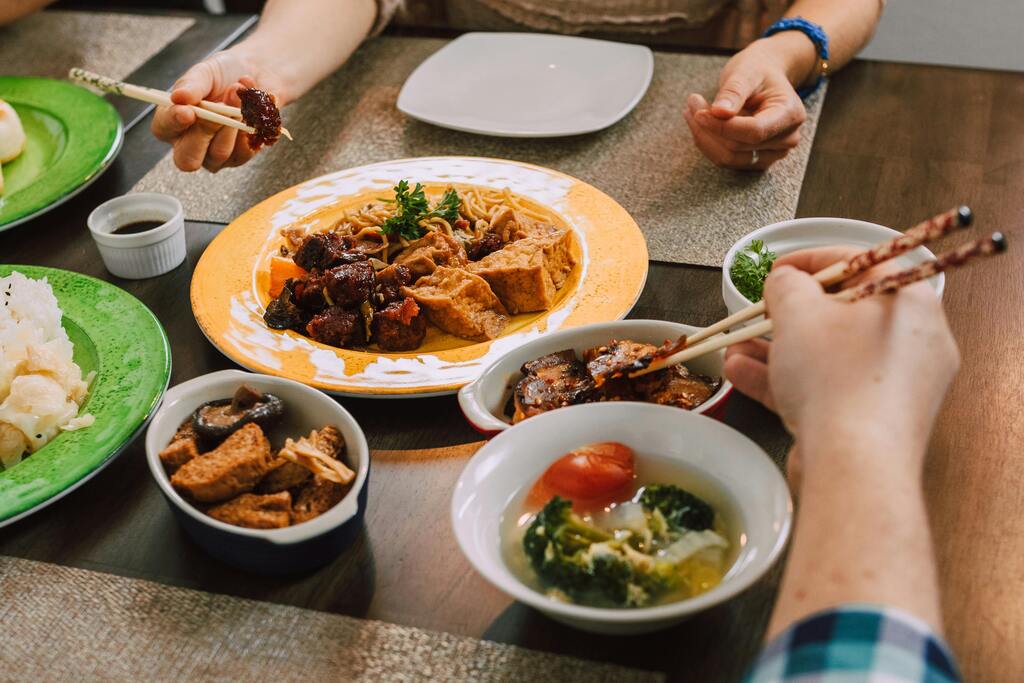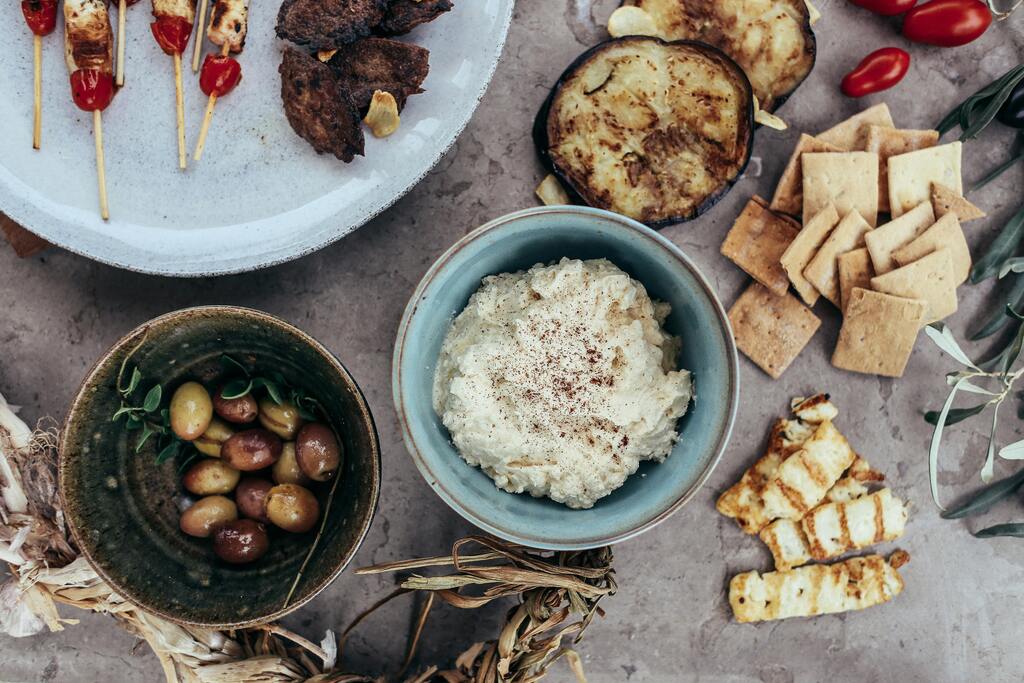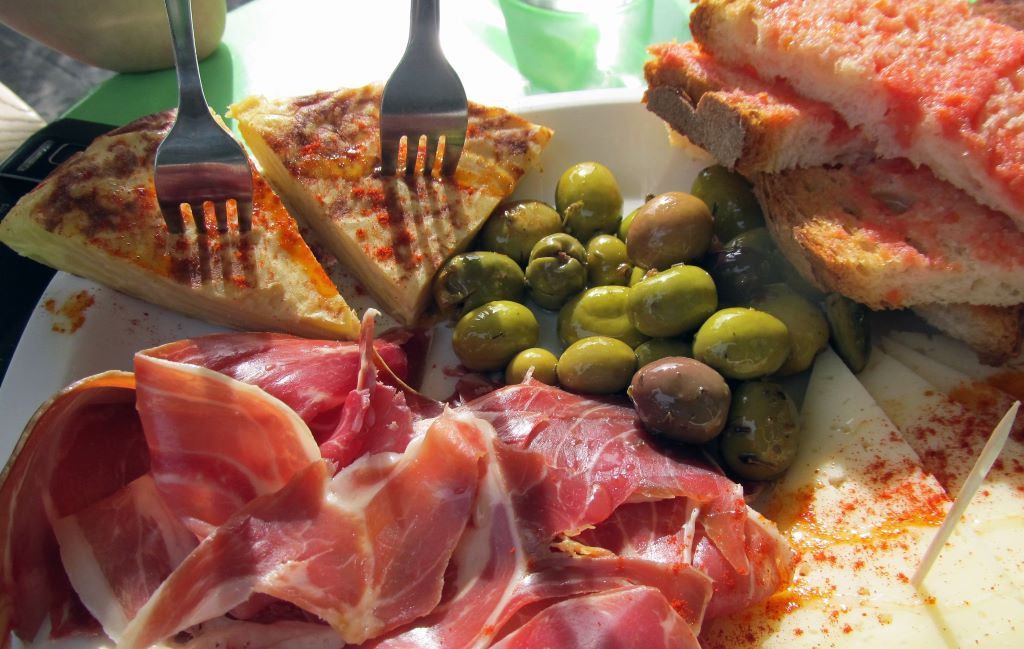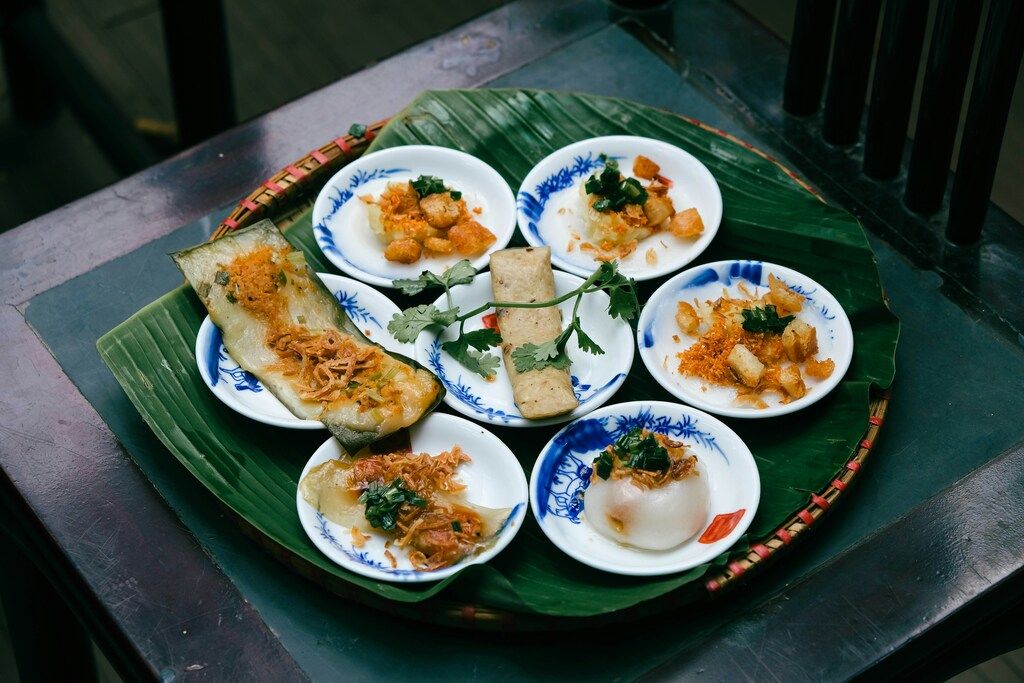

Cambodian food offers a unique take on Southeast Asian cuisine, milder and more subtle than Thai or Vietnamese flavours. In these countries, food is characterised by rich coconut cream and intense spices. But in Cambodia, there’s an emphasis on a gentler, subtler range of flavours. Herbs are a big part of this unique cuisine of Cambodia; so is the fermented fish paste prahok. The mix of royal and common dishes adds to the country’s culinary variety. Cambodian food is found everywhere, from street stalls to fine dining, reflecting a rich, flavourful culinary heritage.
From noodle breakfasts to bold curries and snacks, Cambodian cuisine delights the palate with variety and depth. So, are you eager to know what to eat in Cambodia? Here is the list of the top 10 must-try foods in the country.
Fish Amok: The Creamy Curry That Defines Cambodian Cuisine
Only a few foods in the cuisine of Cambodia are as widely eaten as amok trey. In fact, if there’s one dish you have to try in Cambodia, this is your go-to. Amok is a traditional Khmer curry and an iconic Khmer food in Cambodia. Amok trey blends fish, coconut milk and kroeung paste, creating a fragrant, slightly sweet, and deeply comforting dish.
What makes amok trey unique is its kroeung paste — with lemongrass, turmeric, galangal and kaffir lime for rich flavour. The fish is wrapped up in banana leaves and steamed after being mixed with the paste. The aroma of the banana leaves infuses the fish, which is wonderfully light and flaky. Most recipes call for catfish or tilapia, but the most common fish in the dish is tilapia. Coconut milk gives amok its creamy texture; it’s typically served with rice or crusty bread for a hearty meal.
Often called Cambodia’s national dish, fish amok is one of the most well-known and beloved meals in the country. It is also the traditional food of Cambodia, served at special occasions. Weddings, Khmer New Year and Pchum Ben are not complete without a good helping of this decadent dish. Amok reflects Cambodian cuisine’s essence: fresh ingredients, gentle flavours, and a delicate balance in every bite.
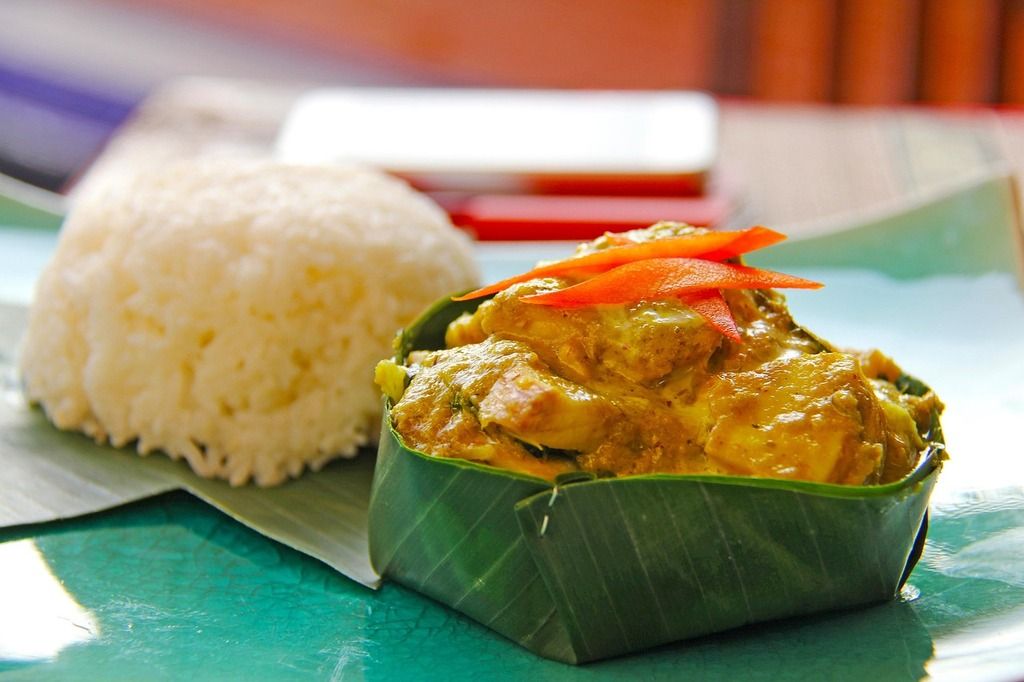
Num Banh Chok: Cambodia’s Beloved Noodle Breakfast
Num banh chok is a popular, healthy Cambodian breakfast — light yet full of flavour and aromatic herbs. It features rice noodles in green curry soup made with lemongrass, turmeric and kaffir lime leaves. Topped with fish or chicken and fresh herbs like basil, mint and coriander, it’s refreshing, light and deeply satisfying.
The green curry soup in num banh chok isn’t spicy — it offers a subtle, tangy flavour that’s easy to enjoy. However, it can be eaten with added chilli paste for those who like it a little spicy. This breakfast is fresh, hearty and energising without being too heavy — perfect to start your day in Cambodia. It is usually served with side vegetables such as cucumber, lettuce and bean sprouts.
Typically served in the morning, num banh chok is found at street vendors and food markets all over the country. It is a popular meal for locals looking for a delicious way to start their day. It’s a flexible dish — try it with various proteins or ask for a vegetarian version if you prefer.
Moreover, you can eat it as brunch or an early dinner if you don’t mind something light. Want more flavours and adventures? Check out this group travel guide to Cambodia and you will be amazed at what you will find.
Bai Sach Chrouk: Grilled Pork and Rice, Cambodia-Style
When it comes to Cambodian street food, bai sach chrouk is a classic. Simple yet satisfying, bai sach chrouk is a Cambodian favourite — even as a breakfast, it’s one of the best. Bai sach chrouk is made from grilled pork that has been marinated and grilled. The pork is marinated in a combination of garlic, soy sauce and coconut milk. It is then grilled over a flame, which gives it a subtle and smoky flavour.
Despite the great flavour of the pork, the real star of bai sach chrouk is the simplicity of the dish. The pork is flavourful but natural, pairing perfectly with the freshness of rice and the lightness of the side dish. The rice served with the pork is warm and has a great smell and taste. Often served with pickled vegetables like cucumbers and carrots, it adds a crisp, tangy touch to cleanse your palate. In truth, this is the best way to eat this food.
Bai sach chrouk, Cambodia’s classic pork and rice dish, is a casual breakfast staple enjoyed daily by locals. However, the beautiful thing about the dish is that you can eat it whenever you want. That means it can be eaten after lunch as a light snack. It is available in street carts throughout cities and towns around the country. This is one of the best dishes you can eat on the go.
Khmer Red Curry: Comfort Food with a Mild Kick
Of all the countries in the region, Cambodia’s curries are some of the mildest ones. Similarities in the taste and ingredients of a Thai curry are evident in Khmer red curry, although the variety of the curry paste used and the fact that it is cooked in coconut milk mean it’s neither too mild nor too spicy. Instead of having a super strong kick, the Khmer red curry is belly-warming instead of making your sweat glands work in overdrive.
Thanks to the coconut milk, there is a guarantee you’ll lick the bowl dry when you’re finished. It is that good. As a popular and somewhat safe dish, a Khmer red curry makes for family-friendly dining, so share a bowl or two with your loved ones. Spoons are recommended!
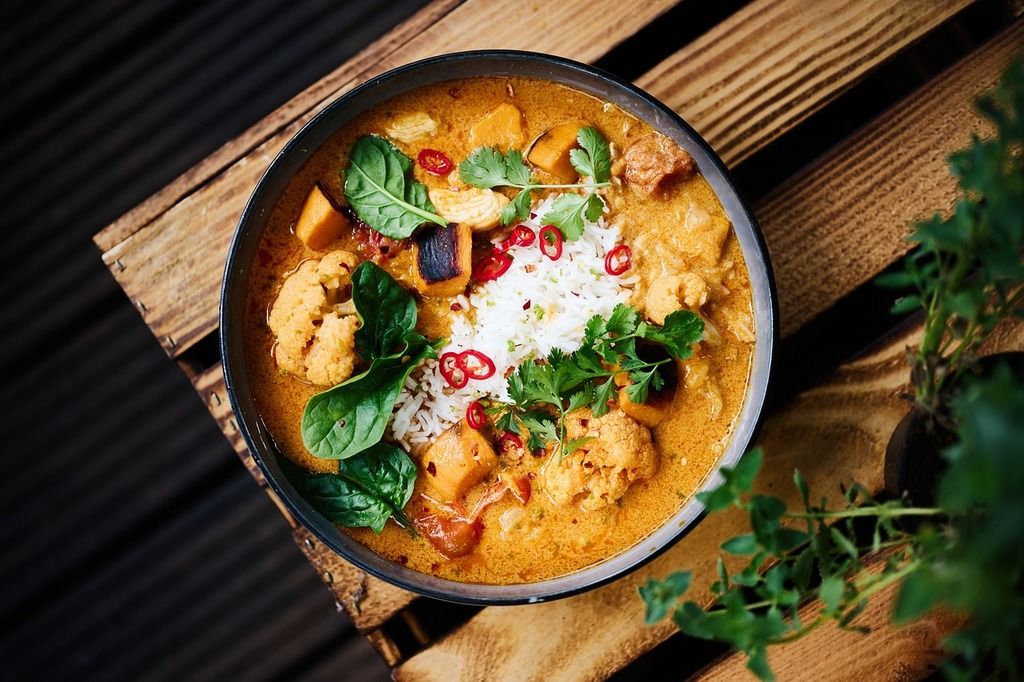
Lap Khmer: A Citrusy, Fiery Beef Salad
For those who like to crank up the heat, lap khmer is the dish for you. A spicy Cambodian ceviche, this course contains paper-thin marinated beef made so by the use of lime juice and garnished with fragrant mint, cilantro and shallot. A hit of fiery chilli is added for the spice lovers who need something a little different to bring a hint of the zesty and citrusy to the table.
The beef becomes tender in the middle through the use of a luscious marinade made sharp with the use of lime juice, adding a tangy and refreshing flavour. The fresh herbs add a depth of flavour and the chilli adds a fruity, spicy touch. It’s the ultimate dish that shows the punchy and tangy foods Cambodia is known for, the gentle balance of heat, acid and freshness.
Lap Khmer is often served as an appetiser or side course, but it is also the ideal choice for someone who is into salad-y things or something light and refreshing for a meal. This Cambodian wonder dish is one of the best ways to cleanse your palate between curries and fried foods. Lap Khmer is a great example of the variety of flavours you can indulge in, which is a must-try in the cuisine of Cambodia.
Lok Lak: Cambodia’s Answer to Shaking Beef
One of the most popular Cambodian dishes among visitors and locals, Lok Lak is a delicious and simple beef stir-fry. A variation of the Vietnamese shaking beef dish, lok lak is a dish served in Cambodia with distinct Asian flavours. Thin strips of beef are marinated in an equal parts sauce/marinade mix of soy, garlic and black pepper. Then, they’re stir-fried with onions and bell peppers.
Lok lak’s real claim to fame is the pepper-lime dipping sauce. Acidic, savoury and deep, this simple mix of lime juice, black pepper and soy enhances the already tender beef with hits of brightness. The final fried egg not only adds richness but also rounds out the texture component of the dish. For these things in and of themselves, lok lak is a must-try food in the cuisine of Cambodia, especially if you are on a tour.
A favourite of locals and tourists, this dish is widely enjoyed in the country and can be found in many authentic Cambodian restaurants. It’s a great option for visitors who want to eat close to what the locals are ordering and for those looking for a flavourful yet not overpowering dish, filling but not heavy, no matter the time of day.
Insects and More: Cambodia’s Adventurous Street Snacks
Cambodia is the perfect destination for foodies who love to explore. Apart from offering some of the most diverse and flavoursome dishes in Southeast Asia, the country is also home to street snacks that are unique and delicious. It might not be for the faint-hearted, but eating insects is an age-old tradition in Cambodia. You’ll spot street vendors selling the bugs everywhere across the country and you won’t be able to resist giving them a try, especially if you are adventurous. The most popular insects are crickets, grasshoppers and tarantulas.
Insects are an excellent source of protein and are also sustainable. This is one of the biggest reasons for their popularity in the country, for locals and visitors. In most cases, the bugs are deep-fried and flavoured with salt, pepper and chilli. Eat them on their own and they’ll probably have you coming back for more. If you’re up for a bit of an exotic adventure that can make your taste buds go crazy, this is one snack you should try.
Frogs and bamboo worms, which are just caterpillars that feed off bamboo shoots, are some of the many other weird and wonderful street snacks you can find in Cambodia. For those who want a break from the norm of fried food, dishes such as braised beaver tail or steamed swallow embryos are also on the menu.
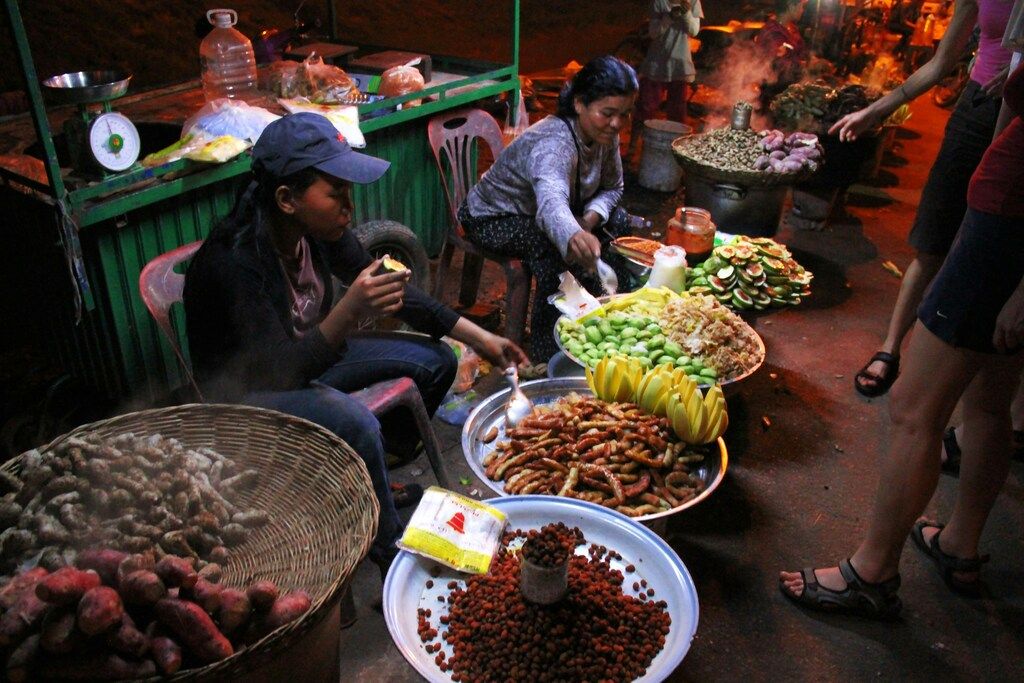
Desserts in Cambodia: Coconut, Rice and Sweet Surprises
While many dishes in Cambodia are savoury, the cuisine does include some pretty awesome desserts. Coconut sticky rice with fresh mango is a firm favourite, combining rich sweetness with the creamy thickness of the coconut milk. Locals also love pumpkin filled with custard, a dessert that’s prepared with the help of a small steamed pumpkin. Another popular sweet treat is coconut jelly. The dish derives its texture and taste exclusively from coconut milk.
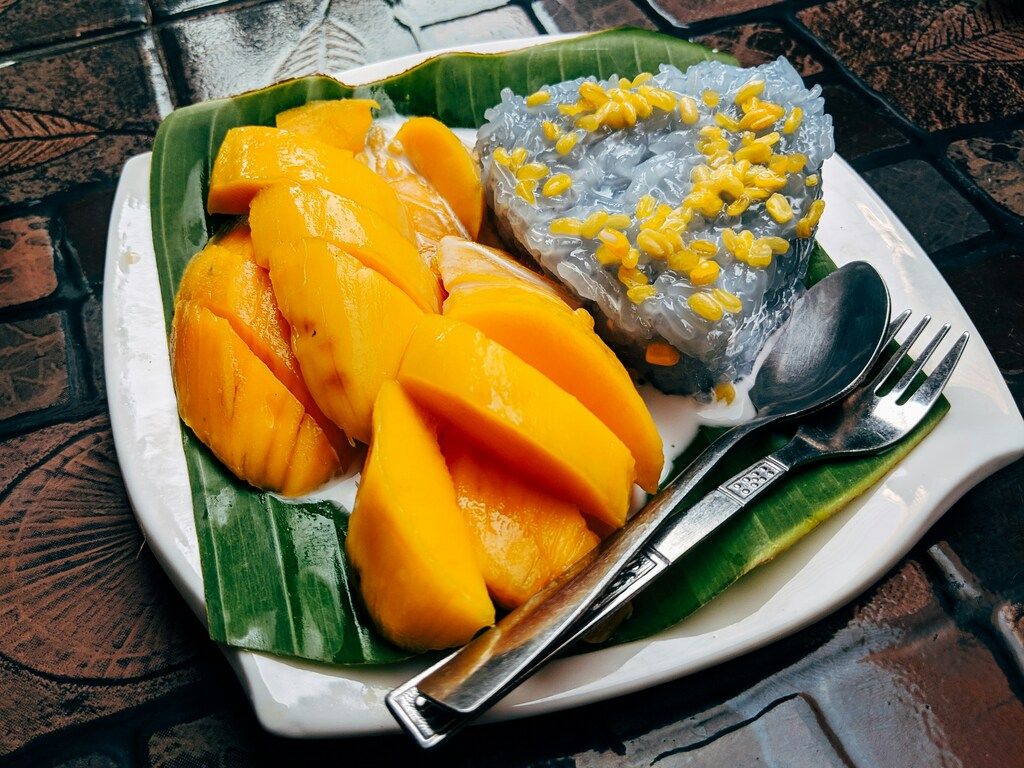
No matter where you’re eating, Cambodian desserts provide the perfect counterbalance to the country’s savoury cuisine. These desserts are great to pair with the rich and hearty savoury dishes, especially when it is time to cleanse your palate after a meal. Anyone with a sweet tooth should know that many Cambodian desserts contain coconut milk, providing a rich punch of flavour compared to what are otherwise relatively light dishes. Thanks to the inclusion of low-fat fruit and root vegetables in the coconut milk, diners feel healthier after eating the desserts.
The cuisine of Cambodia is about seeing a nation’s history and its cultural tradition and spirit, enjoying it with your taste buds. On your next trip to Cambodia, make sure to try these dishes and you will question everything you knew about food in Asia.

Explore Cambodia Through Its Food: A Journey of Flavour and Culture
While eating your way through Cambodia, you can’t help but notice that food is clearly something the country does well. In each dish, there is an element of royal cuisine and rural vibe, restaurant kitchens keeping centuries-old recipes alive through rich curries and vibrant salads. Cambodia’s street food, meanwhile, reveals the more rustic nature of the dishes born of local kitchens, where you can sample everything from the crazy quirky to the beautiful brave.
Whether you sit down to a meal in a local restaurant or go for a snack from a street vendor, make sure you try all the food on this list of things to eat while in Cambodia. You’ll go home with a belly full of yummy meals and a better sense of the country’s diverse culture.
If you want to explore the country and taste the foods for yourself, the best way to do it is through an organised tour through Vietnam, Cambodia and Thailand.

